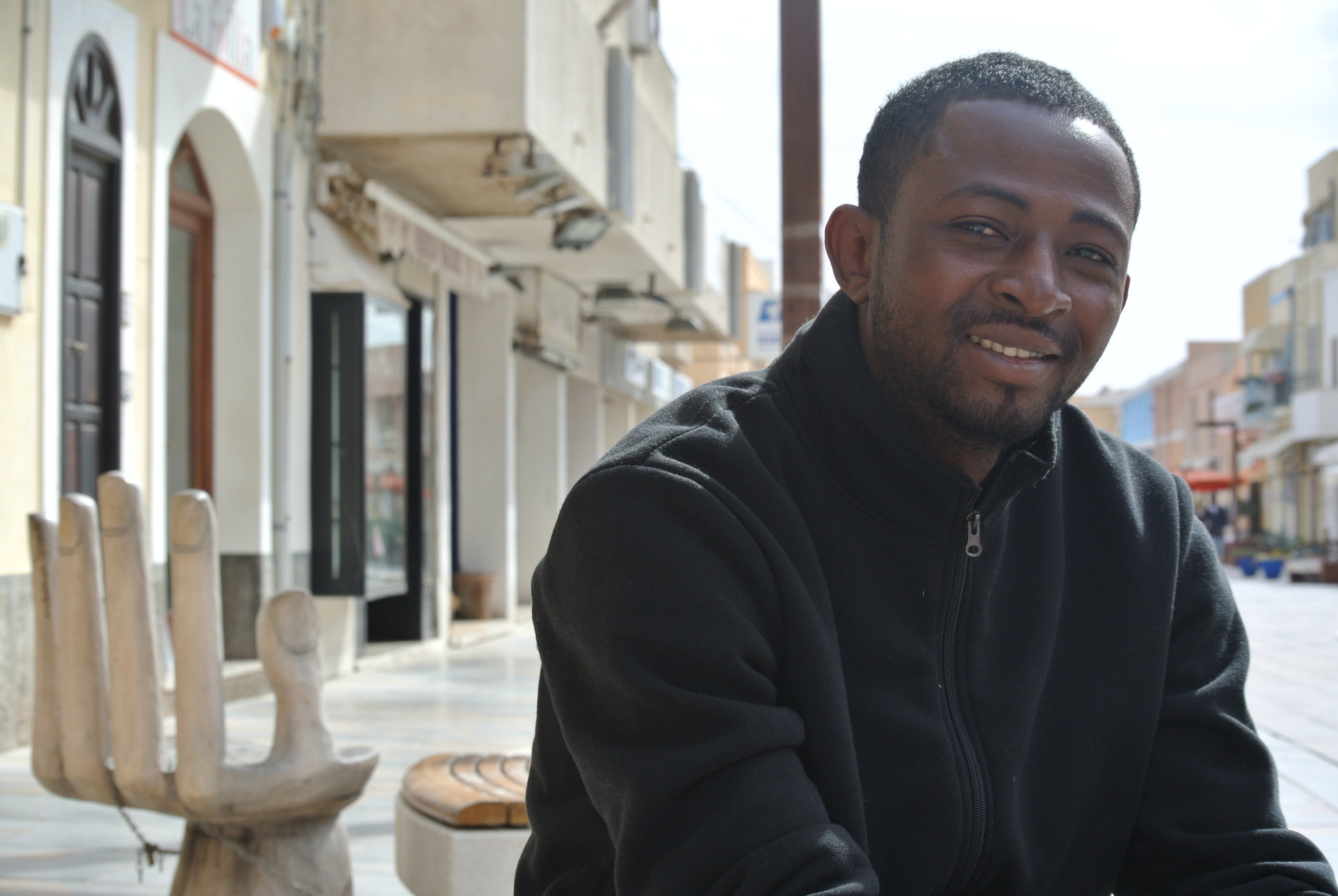Meet Moses
Moses on Lampedusa island, three days after his rescue at sea. Lampedusa, Italy; 10 May 2017. ©Pamela Kerpius/Migrants of the Mediterranean
by
Pamela Kerpius
Recorded:
10 May 2017
Published:
May 2017
Meet Moses.
31 years old and from Benin City, Nigeria.
To reach Lampedusa he crossed three countries: Nigeria, Niger, and the most dangerous of all, Libya.
His journey took one year and three days; he departed Nigeria on 4 May 2016.
It took four days to reach Agadez, Niger from Benin City, which he arrived at by bus. There are police all across the city there looking for migrants; if you are caught you will be deported back to your country, so Moses was advised to stay inside a ghetto organized by smugglers. From there, he paid people on-site to buy food and water for him at a local market; it was too risky for him to leave himself. For over a week he remained inside the confines of the ghetto before departing for the desert.
Moses crossed the Sahara desert in the back of a pickup truck with 27 people, a trip that took five days. “The sun there is something else. It’s actually unbearable.”
He had 4 liters of water total, which ran out, and would not be replenished until the truck reached the border between Niger and Libya.
At the border they found water, but they also found grave danger. All 27 people in the truck were sold for 200 dinars each to people from the Libyan mafia.
The captors held him for ransom in a Sabha prison where he was tortured with hot water being poured on his skin. He was scalded badly, and lifted his shirt to reveal the scars on his back.
He spent more than two months in prison there before his mom and brothers could raise enough money for his release. That figure came to 2,500 dinars, and it put a great deal of stress on his family because a figure that high is not easy to come by for working Nigerians.
Perhaps the worst part of being captured in Libya is that the capture and monetary transaction for his release would not have happened without employing men from his own country.
“[In Libya] they have
guns like you and me
have cell phones.”
“They actually can’t kidnap us without our fellow countrymen being involved. It is not possible,” Moses said. A Nigerian bank account is given to a migrant where his or her family or loved ones will deposit the requested ransom; the Nigerian smuggler working alongside the Libyans withdraws the money and finally pays his boss in dinars. He will carry a gun, too. “Everybody in Sabha has a gun, even my fellow Nigerians.”
He described what others have called “small boys,” young kids, 8-10 years old carrying loaded pistols, he said, “They have guns like you and me have cell phones.”
He remained in Sabha, but was mostly in hiding. Any car with tinted windows, he said, is one you run from, because there are typically dangerous people hidden inside who could kidnap you again.
He and the seven others he was released with found work at a car wash. Together, they washed cars and split the daily earnings until they had enough to transfer to Tripoli, which took about a month.
He worked on a used car lot in Tripoli washing and polishing the cars to look good for sale. He was lucky to be taken under by this particular employer, because the man gave him safe shelter, went on errand to buy him food to eat so he wouldn’t be kidnapped in the city, and paid him a full 300 dinars a month for his work.
He raised enough money and transferred to the coastal camp of Sabratha, where there were over 400 people with him.
Moses crossed the Mediterranean Sea in a rubber dinghy at 11:00 on a Friday night in a group that included three children. He was out at sea for 18 hours before he was rescued, and landed in Lampedusa on Sunday, 7 May 2017; we spoke three days later.
Moses is an amazing human being.

